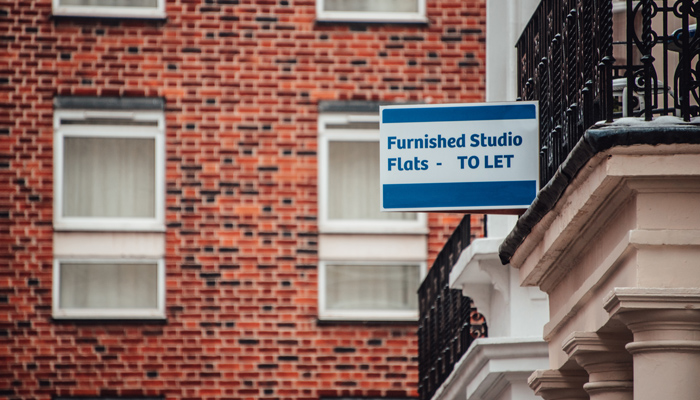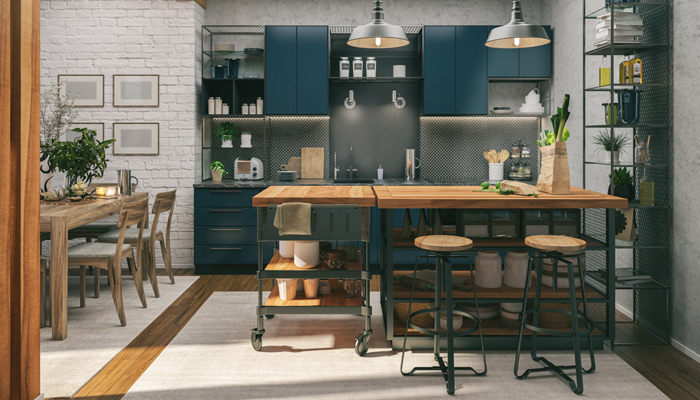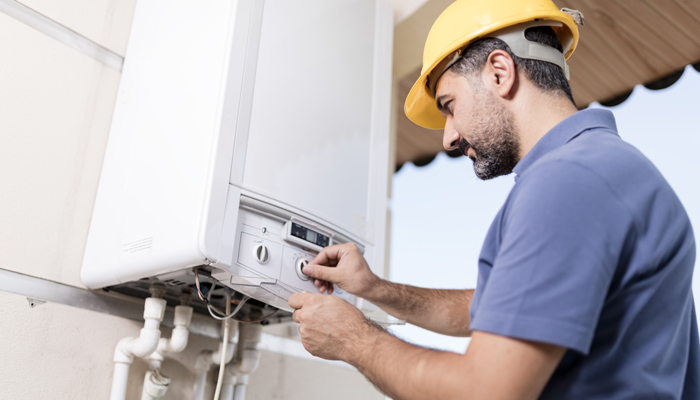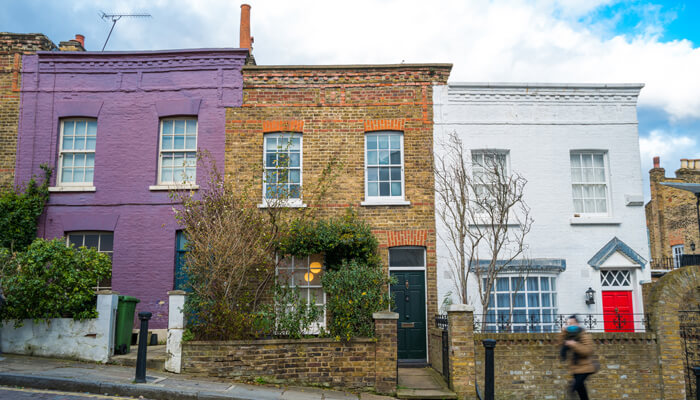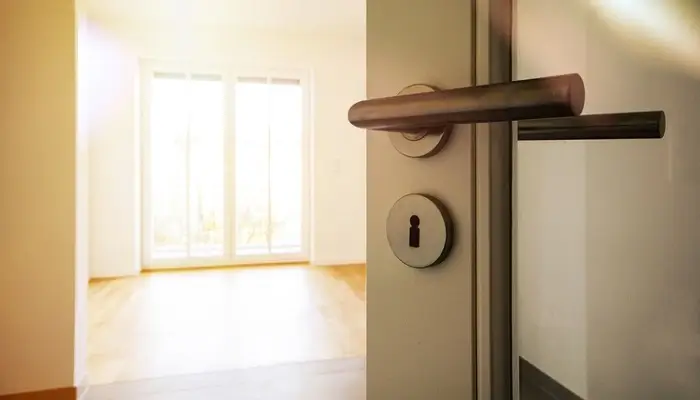What is Landlords Contents Fixtures and Fittings Insurance?
Being a landlord comes with its fair share of worries, especially when it comes to looking after the bits and pieces that make a house feel like a home for your tenants. That's where landlords’ contents, fixtures, and fittings insurance comes in handy. Effectively, this type of insurance is a safety net for the things inside your property that aren't nailed down or built in, but still play a big part in keeping your tenants happy and your rental ticking over smoothly. Think of your appliances, furniture, and even light fittings. These are things we all take for granted, but can prove extremely costly to replace if disaster strikes and you’re not covered.
In this guide, we’ll break down what this insurance is all about, why it's a smart move for any landlord, and how it can save you from dipping into your own pocket when the unexpected happens. Let's start with the essentials.
What are fixtures and fittings?
Fixtures are items that are attached to the property in such a way that removing them would cause damage to the building. These could include built-in kitchen units, bathroom suites, and central heating systems. Essentially, if it's bolted down or integrated into the structure, it's considered a fixture. These items are part of the property and are typically the landlord's responsibility to maintain and insure.
Fittings are a bit more freewheeling. They're the removable items that you can take with you without causing damage to the property. Think of curtains, lamps, and freestanding appliances like microwaves and fridges. Fittings make the space liveable and are crucial for the day-to-day comfort of your tenants, but they're not 'fixed' in the true sense of the word.
Why does this distinction matter? Because when it comes to insurance, knowing which category your items fall into can help you understand what your policy covers and what it doesn’t. This is essential to ensure you're not out of pocket if an incident affects your property. With landlords’ contents, fixtures, and fittings insurance, you can rest easy knowing that both the bolted-down essentials and the movable comforts that enhance your property's appeal are protected.
What fixtures and fittings are landlords responsible for?
Landlords typically handle the maintenance of fixtures - those items firmly attached to the property, like your built-in appliances, plumbing, and electrical systems. These are essential to keep the property functioning and are non-negotiable in terms of landlord responsibility.
Fittings, like curtains, carpets, and freestanding appliances, might also fall under the landlord's care, especially in furnished properties. The specifics can vary and should be clearly outlined in the lease agreement to avoid misunderstandings.
Local laws, which differ across England, Scotland and Wales, play a crucial role, dictating landlord responsibilities beyond the lease terms, especially concerning safety regulations. Understanding these legal obligations is vital for ensuring compliance and maintaining a healthy landlord-tenant relationship.
While landlords are primarily responsible for fixtures, the responsibility for fittings can be a shared area, influenced by lease agreements and local regulations. Clear communication and documentation are needed in order to manage these responsibilities effectively.
What is tenants’ contents?
Tenants' contents are the personal items they bring into a rental property, such as furniture, appliances and decorations. During their tenancy, tenants are responsible for the upkeep of these items, as well as any damage they may cause to the property.
Before making any permanent changes or installations, like hanging pictures or adding shelves, tenants should get the landlord's permission to avoid potential disputes. At the end of their lease, tenants usually must remove their items and restore the property to its original condition unless otherwise agreed. This responsibility ensures the rental remains in good shape for future tenants and helps maintain a good relationship between tenants and landlords.
What happens if a fixture or fitting needs repairing?
When a fixture or fitting in your rental property needs attention, it's crucial to address it quickly and efficiently.
Identifying the issue
It starts with the tenant noticing something's off and reaching out to you. A clear description and photos can help assess the situation quickly.
Deciding who’s responsible
For landlords: If it’s a fixture (such as built-in appliances or plumbing), it’s typically your job to sort it out. These are essential for the property's functionality and that means they’re your responsibility.
For tenants: When it’s about contents the tenant has added or damaged from misuse, the ball’s in their court, but they should get your approval before making any fixes.
The repair process
Landlord role : If the repair is your responsibility, organising a fix in a reasonable time frame is key to maintaining a safe and liveable space.
Tenants role: If it’s on the tenant, they need to arrange the repair, ensuring it meets your standards and doesn’t affect the property negatively.
Maintaining a property is a team effort. You’re there to keep the place in top shape, dealing with the big stuff. Your tenants should look after their belongings and treat the property with care.
Avoiding repair disputes
To sidestep disputes over repairs, clear communication and understanding are a must. Here are a few quick tips:
Keep open lines: Encourage tenants to report issues early. Clarify repair responsibilities and timelines to build trust.
Routine check-ups: Regular property inspections can catch bigger issues before they prove costly. Ensure tenants know their maintenance responsibilities through these visits.
Clear lease terms: Detail repair processes and responsibilities in the lease agreement to avoid misunderstandings.
Maintenance schedule: Proactively maintain your property to prevent urgent issues.
Educate tenants: Guide tenants on proper use and care of fixtures and fittings to minimise damage.
Who is responsible for insuring fixtures and fittings?
As a landlord, your policy usually covers the building itself and any fixtures you've provided in communal areas. It's about protecting the structure and the essentials that come with the property. But, for a full safety net, if you are letting your property on a fully furnished basis, then you might also consider landlord's contents insurance. This extra step covers items in furnished properties, such as furniture and appliances, against damage or theft.
Tenants are responsible for insuring their personal belongings. This is where tenants’ insurance comes into play. It covers everything they bring into the home, from their TV to their toaster. Landlords insurance can also offer liability protection, which is handy if someone suffers an injury in the property which is the responsibility of the landlord.
For landlords, choosing a policy arranged by Towergate that covers both fixtures and fittings means you're financially protected against a wide range of incidents. It’s important to review your policy details to ensure suitable coverage, as some items might need additional protection.
Tenants should look for a tenants’ contents insurance policy that covers the replacement cost for their belongings. They'll also want to check if the policy offers public liability coverage, which can save them from major headaches if there's an accident.
Does contents insurance cover fixtures and fittings?
Contents insurance mainly covers personal belongings within a property, like furniture and electronics and personal items,rather than fixtures and fittings which will be considered part of the buildings cover. For landlords, fixtures and fittings in communal parts of a building can be added to the buildings insurance by extension, although some policies on the market will provide some automatic cover up to a fixed limit of say £5,000 but this can vary and you should check the cover.
Landlords renting properties out fully furnished should consider a specific policy, like landlords contents insurance, so you’re not left out of pocket for repairs or replacements. This distinction is important: while tenants' insurance covers their own possessions and potential liability, landlords need to fully protect the property and their own contents. Always check your policy details to ensure you have the necessary coverage for all items in your rental.
Navigating the world of landlords' contents, fixtures, and fittings insurance doesn't have to be as daunting as you’d expect. With Towergate's landlord insurance solutions provided by Towergate, your property can be covered for a range of perils, fire, storm, flood, accidental damage. Enjoy the peace of mind that comes with knowing both the structure of your property and the valuable items within are protected. With flexible coverage options and competitive pricing, safeguarding your investment property has never been easier.
Don't let unexpected incidents disrupt your rental business. Get a quote online or give us a call at 0330 808 8282 today, and take the first step towards protection arranged by Towergate.
Landlord insurance from Towergate
We provide landlord insurance for a wide range of properties and tenants including multi occupancy, students, local authority placements, unoccupied and much more.
See our landlord insurance page, get a landlords insurance quote online or call 0333 060 0915 for more information.
About the author
 Alison Wild BCom (Hons), MAAT, MATT, Taxation Technician is a highly respected industry professional who has been working with and advising SMEs in areas including tax, pensions, insurance and marketing for over 25 years. She is a member of the Association of Accounting Technicians (AAT) and Association of Tax Technicians (ATT) and also has 20 years' experience as a residential landlord.
Alison Wild BCom (Hons), MAAT, MATT, Taxation Technician is a highly respected industry professional who has been working with and advising SMEs in areas including tax, pensions, insurance and marketing for over 25 years. She is a member of the Association of Accounting Technicians (AAT) and Association of Tax Technicians (ATT) and also has 20 years' experience as a residential landlord.
Date: March 08, 2024
Category: Landlords



